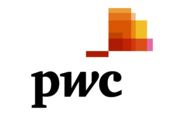
Have you ever felt that dreaded burning sensation in your chest after polishing off a covered dish with marinara sauce? Turns out, it may not be heartburn after all.
While the rare case of heartburn caused by acid reflux often isn’t something to be concerned about, persistent episodes may indicate a more serious issue. Researchers estimate that 20% of people in the U.S. have gastroesophageal reflux disease, which commonly is referred to as GERD.
If left untreated, GERD can progress to a point where it triggers a change in cell lining of the lower esophagus, the tube that carries food from the mouth to the stomach. This progression may cause a condition called Barrett’s esophagus, increasing the risk of developing a potentially fatal cancer of the esophagus.
Allegheny Health Network (AHN) in Pittsburgh, Pennsylvania uses advanced treatments to quickly diagnose and treat esophageal conditions to prevent them from developing into conditions like cancer. In advance of the International Foundation for Gastrointestinal Disorders GERD Awareness Week, which starts on Nov. 21, five AHN doctors who specialize in the disease spoke with Pittsburgh Inno about options for patients and ongoing innovation to improve treatments.
GERD is a digestive disease with the highest direct cost to treat. And indirect costs caused by reduced work productivity are $75 billion a year.
The doctors work within the health system’s Esophageal Institute:
- Dr. Blair Jobe is the director of the Esophageal Institute.
- Dr. Shahin Ayazi specializes in esophageal and gastric surgery.
- Dr. Kirsten Newhams treats patients with reflux disease, Barrett’s esophagus, hiatal hernia, esophageal and gastric cancer, esophageal and gastric motility disorders, Zenker’s diverticulum, and swallowing disorders.
- Dr. Yoshihiro Komatsu treats patients with esophageal and gastric cancer, GERD/reflux disease, Barrett’s esophagus, hiatal hernia, paraesophageal hernia, achalasia, gastroparesis, esophageal and gastric motility disorders, Zenker’s diverticulum, and swallowing disorders.
- Dr. Toshitaka Hoppo specializes in the treatment of GERD, swallowing difficulties, achalasia, Barrett’s esophagus, and esophageal cancer. He is helping to pioneer the field of minimally invasive robotic-assisted surgery and endoscopic therapy for the treatment of esophageal diseases.
How is GERD diagnosed?
Dr. Kirsten Newhams: Often a good place to start is with an endoscopy to see if it’s a classic case of a hiatal hernia where a portion of the stomach slips above the large muscle separating the abdomen and chest.
To diagnose reflux, there are a couple ways to do pH or acid studies. Usually at the time of an endoscopy, a small capsule can be placed at the bottom of the esophagus to record events and measure the amount of acid reflux a patient has. An alternative is a high-resolution esophageal manometry that measures pressures in the esophagus, which tells the doctor whether the esophagus is working normally. This might result in finding out a patient has a motility disorder where nerves and muscles are not working together correctly. You can diagnose and treat that, and the patient gets better. The important part of evaluation for Barrett’s is to make sure alternative things aren’t happening. If it is GERD, comprehensive treatment includes healthy lifestyle changes, medical therapy, counseling and ongoing surveillance over time.
What is the relationship between GERD, if left untreated, and esophageal cancer?
Dr. Blair Jobe: When the muscle or valve between the esophagus and stomach breaks down for reasons that aren’t entirely clear, acid enters the esophagus. The stomach loves acid, which helps the digestion process, but when acid gets into the esophagus, we have a problem. What then occurs is chronic inflammation, which can lead to cellular changes that can set a person up for cancer. The crux of the problem is we have a huge number of patients in our population who have GERD, but proportionally, only a small number go on to develop cancer. It’s different from prostate colon screening with an endoscope. Those have proven to be high yield. With GERD, it’s the perfect needle in the haystack analogy.
Dr. Yoshihiro Komatsu: About 15% of GERD patients develop Barrett’s esophagus. Patients with Barrett’s esophagus have a 30-times higher risk of developing esophageal cancer compared to the general population. However, it is still low risk unless dysplasia is detected. Thus, screening and surveillance for Barrett’s esophagus in patients with GERD are recommended.
Unlike breast cancer, colon cancer and prostate cancer, there is no preventative schedule for average-risk Americans to get screened for esophageal cancer. What should patients and their doctors be on the lookout for to determine who needs to be screened?
Dr. Shahin Ayazi: The risk of esophageal cancer in patients with Barrett’s esophagus is quite low: approximately 0.5% per year. Therefore, the diagnosis of Barrett’s esophagus should not be a reason for alarm. It is, however, a reason to undergo periodic endoscopies.
There’s no agreement among experts on who should be screened. Barrett’s esophagus tends to occur in middle-aged Caucasian men who have had heartburn for many years. One recommendation is to screen patients older than 50 who have had significant heartburn or required regular use of anti-acid medications for several years. Smoking a pack of cigarettes a day increases the risk of adenocarcinoma of the esophagus by 100%, and the risk does not go away if tobacco use stops. Diagnosing Barrett’s esophagus and treating it before it can progress is a scientifically proven way to prevent cancer.
In conjunction with GERD Awareness Week, please discuss the importance of early detection as it relates to both the burden placed on health systems and on employers.
Ayazi: GERD is the most frequent gastrointestinal diagnosis associated with outpatient clinic visits in the United States, with nearly 9 million visits per year. In addition, it frequently requires prolonged or definitive therapy, either through medication or periodic treatment, or a combination of both. Patients with a diagnosis of GERD also have a higher likelihood of a subsequent diagnosis of esophageal adenocarcinoma, esophageal stricture, chronic cough, sinusitis, asthma and sleep problems. This disease also has a profound effect on quality of life and work performance, including missed work, sleep loss due to discomfort or regurgitation, and in some cases, an inability to participate fully in social activities. All these factors make GERD an expensive disease to manage.
Barrett’s esophagus is more likely to occur in patients who either first experienced GERD at a young age or have had a longer duration of symptoms. It has been shown that Identifying cancer early can improve patient care and outcomes. Early detection of reflux disease is critical, as it allows earlier intervention. That, in turn, can minimize the consequences and costs associated with managing its complications.
What techniques and advanced treatments are the team at Allegheny Health Network’s Esophageal Institute using to give patients with esophageal conditions the best possible outcomes?
Komatsu: For GERD patients, the Esophageal Institute can offer all kinds of anti-reflux surgeries and procedures.
- The laparoscopic/robotic assisted Nissen fundoplication allows a surgeon to create a sphincter tightening muscle at the bottom of the esophagus to prevent acid reflux.
- A partial fundoplication called a TIF procedure allows the surgeon to reconstruct the valve between the esophagus and stomach.
- The Stretta procedure uses low-frequency heat to reshape the ring of muscles in the lower esophagus.
- The minimally invasive LINX Reflux Management System is a small bracelet of magnetic titanium beads that surround and compress the lower esophageal sphincter to prevent acid from entering the esophagus.
The Esophageal Institute also receives patients with failed foregut surgery. The foregut is also known as the upper gastrointestinal tract.
The institute also offers advanced endoscopic techniques called POEM (per oral endoscopic myotomy), which is splitting the muscle layer of a certain location of the gastrointestinal wall. POEM was initially innovated for treatment of a disease called achalasia about 10 years ago. The Esophageal Institute was one of the first sites to perform POEM in the U.S.
For patients with esophageal or stomach cancer, the Esophageal Institute holds a multi-disciplinary conference every week to discuss treatment options, including available trials on each cancer patient with teams of surgery, oncology, radiology, medicine and pathology.
Dr. Toshitaka Hoppo: For GERD, we have run specialized esophageal physiology testing, including high-resolution manometry, 48-hour wireless pH testing and 24-hour hypopharyngeal impedance-pH testing to understand patients' anatomy and physiology, and make a correct diagnosis of GERD. Based on this, we do laparoscopic or robotic anti-reflux surgery, such as Nissen fundoplication and the LINX procedure, which is new technology. We have implanted the LINX device on more than 600 patients, and we are the highest volume LINX center in this country.
Jobe: The beauty of this approach is that LINX can be done as an outpatient procedure, and it is easily reproducible. It’s easy to teach and it is scalable. The large number of patients who have been treated with LINX are very happy. Ninety-two percent of them have been able to get off all the medicine they were taking to treat GERD.
What are some innovations in this field?
Newhams: Allegheny Health Network is one of the nation’s leaders for minimally invasive and robotic esophageal surgeries. This allows us to treat patients using advanced technology and sophisticated instrumentation. The state-of-the-art robotic equipment enhances a surgeon’s vision, precision and control to treat patients through just a few small incisions. For patients, the result is less pain and blood loss, quicker healing and very little scarring.
Ayazi: Steve Jobs, the protagonist of the digital era, once said, “I think the biggest innovations of the 21st century will be at the intersection of biology and technology.” The introduction of several new diagnostic tests at the beginning of the 21st century, such as high-resolution esophageal manometry, is an example of the convergence of biology and technology in the field of esophageal disease as Jobs foretold.
These diagnostic tests allow the characterization of esophageal disorder with detail and elegance not previously possible. In the midst of adapting these new technologies to clinical practice, several minimally invasive esophageal therapeutic interventions were introduced, providing opportunities for the clinician to use data acquired from new tests to calibrate the intervention and individualize the therapy to the patient. This enables the esophageal surgeon to individualize therapy based on clinical presentation, physiologic factors, and patient expectations and needs.
Heartburn and indigestion aren’t just an inconvenience — they can be symptoms of gastroesophageal reflux disease (GERD). Take the quiz to see if your symptoms could be more than just heartburn.
Allegheny Health Network, a Highmark Health Company, is a western Pennsylvania-based integrated healthcare system that serves patients from across a five-state region that includes western Pennsylvania and the adjacent regions of Ohio, West Virginia, Maryland and New York.
